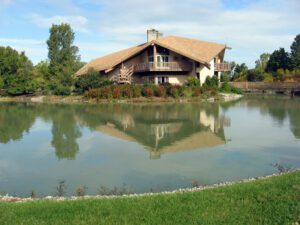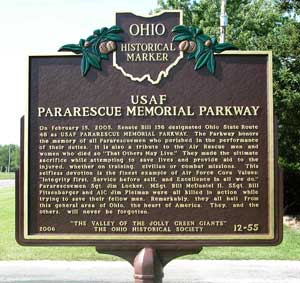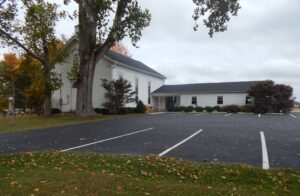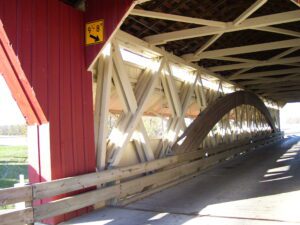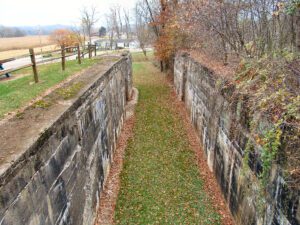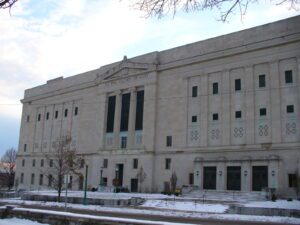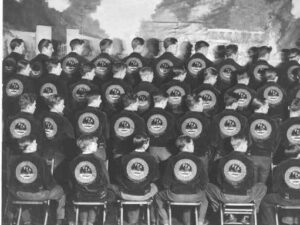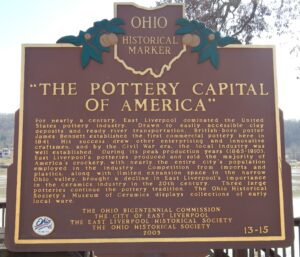, OH
A dense swamp forest roughly the size of the state of Connecticut once stretched across this region of Ohio and Indiana. A remnant of ancient Lake Maumee, this dense, soggy flatland supported abundant waterfowl and wildlife, but blocked travel and settlement and remained largely uninhabited until it was cleared and drained for agriculture between 1860 and 1885. This marsh and other scatter remnants are all that remain of the Great Black Swamp. Managed for a variety of wetland wildlife, Magee is one of the premier bird watching sites in North America, with more than 300 species.
, OH
On February 15, 2005, Senate Bill 156 designated Ohio State Route 48 as USAF PARARESCUE MEMORIAL PARKWAY. The Parkway honors the memory of all Pararescuemen who perished in the performance of their duties. It is also a tribute to the Air Rescue men and women who died so “That Others May Live.” They made the ultimate sacrifice while attempting to save lives and provide aid to the injured, whether on training, civilian or combat missions. This selfless devotion is the finest example of Air Force Core Values: ” Integrity first, Service before self, and Excellence in all we do.” Pararescuemen Sgt. Jim Locker, MSgt. Bill McDaniel, SSgt Bill Pitsenbarger and AIC Jim Pleiman were all killed in action while trying to save their fellow man. Remarkably, they all hail from this general area of Ohio, the heart of America. They, and the others, will never be forgotten.
, OH
The comingling of faiths in an area settled predominantly by Quakers helps explain the origins of Jonah’s Run Baptist Church. Ministered to by a Baptist preacher, the children and neighbors of Daniel Collett (1752-1835), an Episcopalian and private in the Revolutionary War, and his wife Mary Haines Collett (1753-1826), a Quaker from Virginia, became Baptists and started the church in 1838. Levi Lukens (1767-1860), a Quaker from Pennsylvania by way of Virginia, purchased the land where the church stands in 1812 and sold it in 1839 to a founder of the congregation. Like local Quaker meetinghouses, the church had separate entrances for men and women and a partition between the two that divided the sanctuary. The congregation’s sons and daughters lived their faith. Howard McCune (1852-1923) was the Clinton Baptist Association’s moderator and president of the Ohio Baptist Convention’s state board. Anne Cossum (1894-1977) was a missionary in China from 1920-1927.
, OH
Constructed in 1873, the Bigelow Bridge spans approximately 100 feet across Little Darby Creek. Reuben Partridge built the superstructure at a cost of $12.50 per linear foot ($1,500). Bercupile & Snell built the masonry foundation at a cost of $7.00 per perch (a perch is approximately 25 cubic feet). Partridge built bridges throughout Union County and the surrounding area from 1866 until his death in 1900. The covered bridge is named for Eliphas Bigelow, an early resident of Union County, who built the nearby Bigelow House on the south side of Post Road (SR 161) in 1846. Union County Engineer employees rehabilitated the bridge from 1989 to 1991 by installing a new support system. The Partridge trusses currently carry only the weight of the original bridge. The rehabilitation project received the 1992 Engineered Timber Bridge Award from the National Forest Products Association.
, OH
The Upper Trenton Lock (Lock 15 South) of the Ohio & Erie Canal was built between 1828 and 1829. Originally built of cut sandstone blocks, the lock was named for the Village of Trenton, now Tuscarawas. Lock 16, or Lower Trenton Lock, lies only 800 feet southwest of Lock 15. The lock tender, who lived in a house on this site, served both locks. Repeated flood damage prompted reconstruction of Lock 15 in 1907. The deteriorated stonemasonry was completely replaced with concrete at a cost of $6,815. The old stone was used to shore up the towpath. Use of the state-owned canal had declined significantly by this point, and the great flood of 1913 brought the canal era to an end in Ohio.
, OH
The first Masonic Lodge in Dayton was founded in 1808, located in the first Montgomery County Courthouse. Various other locations were home to Masons in Dayton, but by World War I, rapid growth of the Masonic community called for the creation of a new Lodge building. Masons of the time, including civic and business leaders of Dayton, conceived the idea of a new Masonic Center located on the hill at Belmonte Park North and Riverview Avenue. Ground was broken and construction of the $2.5 million Masonic Temple began on July 20, 1925. Through contributions from the Masonic community, the tremendous task of raising a majority of the building cost, $1.5 million, was accomplished in merely ten days in 1924. It is doubtful that the Temple could be duplicated given the fact that the large quantities of marble and mahogany and cherry woods used in construction would be difficult to procure today.
, OH
The blue corduroy jacket worn by members is a widely recognized symbol of the National FFA Organization, formerly Future Farmers of America. In 1933, Dr. J.H. “Gus” Lintner, a Fredericktown teacher and advisor to the local FFA chapter, commissioned a jacket for its members to wear to FFA’s national convention in Kansas City, Missouri. Impressed by the design, the organization adopted the jacket as part of FFA’s Official Dress. Millions of members have worn it since. Founded in 1928 to promote agricultural education, FFA continues its mission in 2018 in all 50 U.S. states and two territories.
, OH
For nearly a century, East Liverpool dominated the United States pottery industry. Drawn to easily accessible clay deposits and ready river transportation, British-born potter James Bennett established the first commercial pottery here in 1841. His success drew other enterprising and innovative craftsmen, and by the Civil War era, the local industry was well established. During its peak production years (1865-1910), East Liverpool’s potteries produced and sold the majority of America’s crockery, with nearly the entire city’s population employed in the industry. Competition from imports and plastics, along with limited expansion space in the narrow Ohio valley, brought a decline in East Liverpool’s importance in the ceramics industry in the 20th century. Three large potteries continue the pottery tradition. The Ohio Historical Society’s Museum of Ceramics displays collections of early local ware.


